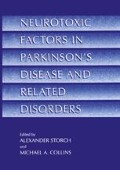Abstract
Endogenous tetrahydroisoquinolines that may be formed in the brain spontaneously or in enzymatic reactions from dopamine or phenethylamine are generally regarded as neurotoxins that may be implicated in neurodegenerative diseases, particularly those specifically affecting the dopaminergic systems, as, e.g., Parkinson’s disease. Following our earlier results, demonstrating that chronic administration of tetrahydroisoquinoline (TIQ) and its derivative, salsolinol, may induce neurochemical changes compatible with experimental Parkinson’s disease, we presently investigated their acute effects on spontaneous locomotor activity and hypermotilities induced by amphetamine or morphine in C57/BL mice, and their propensity to interact with cortical noradrenaline α 1, α 2 and ß adrenoceptors, striatal dopamine D1 and D2 receptors, and cortical L-type calcium channels of the rat brain in vitro. Both TIQ and salsolinol reduced the spontaneous locomotor activity, and inhibited hyperactivity induced by amphetamine, 2 or 3mg/kg ip, when given at doses lower than those affecting the spontaneous locomotor activity. In contrast, both compounds facilitated the hypermotility induced by l0mg/kg ip of morphine. The effects of TIQ are not due to a direct receptor action, as the compound does not affect the specific radioligand binding to dopamine D1 and D2 receptors, nor adrenergic α 1 and ß receptors, nor to L-type calcium channels in vitro. The only receptor action of the investigated tetrahydroisoquinolines was binding to adrenergic α 2 receptors, and this action may be involved in the potentiation of morphine running fit.
Access this chapter
Tax calculation will be finalised at checkout
Purchases are for personal use only
Author information
Authors and Affiliations
Editor information
Editors and Affiliations
Rights and permissions
Copyright information
© 2000 Springer Science+Business Media New York
About this chapter
Cite this chapter
Vetulani, J., Nalepa, I., Antkiewicz-Michaluk, L., Sansone, M. (2000). Opposite Effects of Simple Tetrahydroisoquinolines on Amphetamine and Morphine-Stimulated Locomotor Activity in Mice. In: Storch, A., Collins, M.A. (eds) Neurotoxic Factors in Parkinson’s Disease and Related Disorders. Springer, Boston, MA. https://doi.org/10.1007/978-1-4615-1269-1_46
Download citation
DOI: https://doi.org/10.1007/978-1-4615-1269-1_46
Publisher Name: Springer, Boston, MA
Print ISBN: 978-1-4613-5470-3
Online ISBN: 978-1-4615-1269-1
eBook Packages: Springer Book Archive

